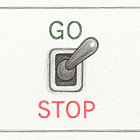Valley Forge, Go/No-Go Decisions, and Left of Bang Revisited
Profiles in Preparedness #42
When You Find Yourself in Valley Forge
In December 1777, General George Washington led his army into Valley Forge. Things weren’t going well. Despite earlier victories at Trenton and Princeton, he had recently lost at Brandywine and Germantown. The British occupied Philadelphia, the nation’s capital.
Washington didn’t have the army he needed. Resources were scarce. Troops fought with mismatched weapons. They were untrained, undisciplined, and unorganized. To make matters worse, Washington knew Congress was considering replacing him.
But preparation never stops. Even in the middle of the war, Washington used Valley Forge as a place to transform his army. He brought in outsiders like Baron von Steuben, who translated Washington’s vision into daily drills and discipline. That freed Washington and his staff to focus on what only they could do. Over a period of a few months, the ragtag militia became a professional force capable of standing toe-to-toe with the British.
Valley Forge was miserable in the moment, but it became the birthplace of the U.S. Army. This was change management under duress—success born not from enduring the hardship, but from weaponizing it to sharpen their ability to fight.
When you find yourself in your personal Valley Forge, when things aren’t going the way you planned, what will you do?
Will you frame adversity as preparation for something bigger—or dismiss it as unfair?
Will you bring in outside perspective to act—or spin in place?
Will you commit to daily practices that compound into strength—or ignore the invisible gains?
The long view matters. Valley Forge wasn’t the victory, but it was the preparation that made victory possible.
So when you find yourself in Valley Forge, the question isn’t whether you’ll endure it. The question is what will you do with it?
Inside The CP Journal
Here are some of the articles that were added to the site this week.
Preparing for an uncertain future is hard because you can’t know (for sure) which capability will tip the scales between success and failure when crises or disruptions occur. This leads to a dangerous cycle: if anything might be the difference, then everything becomes a priority.
For paying subscribers, this article looks at the go/no-go decision as the mechanism that leaders can use to ensure their team is focused on the right priorities.
While researching this week’s introduction, I stumbled across my spirit Prussian Army officer, Baron von Steuben, whose contributions to the American Revolution surpass many of the other, more well-known names we associate with the era.
This article includes a selection of quotes about his story, why they are important, and things that people who say they are “building a plane while they fly it” should consider in their own journeys.
This Week‘s Reads
Just one resource this week:
Podcast | “Left of Bang Revisited.” Over the summer, I had the opportunity to join Jon Becker on his incredible podcast “The Debrief.” I thoroughly enjoyed the conversation, discussing the journey from where the ‘left of bang’ concept was born to how it is being used today. Give it a listen!
Enjoyed This Issue? Pass It On and Go Deeper.
If this newsletter sparked ideas or challenged your thinking, share it with your network, a colleague, or on social media. Sharing is how we expand the community of professionals committed to getting and staying left of bang.
And if you want to go further, become a paying subscriber for exclusive access to:
The Tactical Analysis Course & behavioral analysis practice exercises
The Project Management in Emergency Management Playbook
The Operational Readiness Playbook that details how to build a watch office
And if you’re thinking about how to strengthen your organization’s preparedness, that’s what we do. Whether it’s strategy development, assessments, planning, speaking events, or exercises, we help teams build the skills and strategies to stay ahead of the next challenge.




Man… powerful reflective questions. Already downloaded and have The Debrief podcast ready in my list for this week 👊🏻